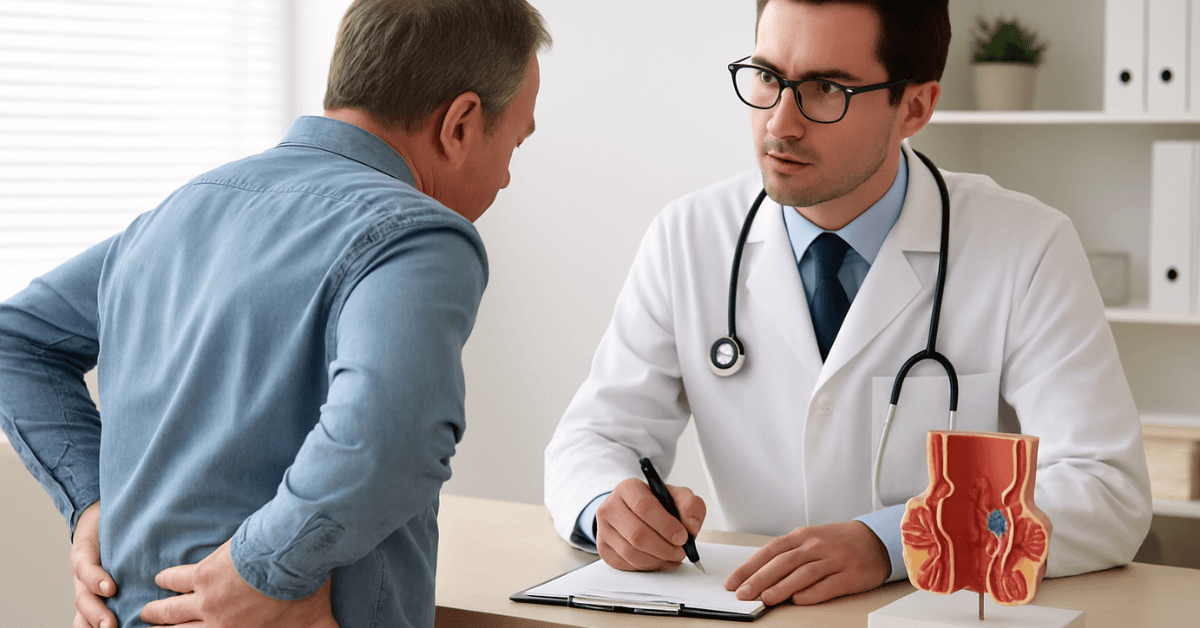What are the 1st, 2nd, 3rd, and 4th Degrees or Grades of Hemorrhoids?
Want to update your knowledge about hemorrhoids and their grades? Well, your curiosity is valid, as hemorrhoids are equally common among individuals of different genders. According to the John Hopkins Medicine, around half of all people experience hemorrhoids by the age of 50.
Furthermore, hemorrhoids are the swollen blood vessels or veins in the lower rectum and anus. These can either be internal (inside the rectum) or external (under the skin around the anus). Although, symptoms greatly vary depending on the type and degree of hemorrhoids. Moreover, treatment options are also diverse. From medications to lifestyle changes, anything can work to help one get rid of hemorrhoids.
In this guide, we will discuss the four grades or degrees in depth. According to the Natural Library of Medicine, this grading is based on two aspects. One the appearance of internal hemorrhoids and the other degree of prolapse. In technical terms, they name it Goligher’s classification.
Four Grades of Hemorrhoids – Grade I
As mentioned earlier, internal hemorrhoids can be of four grades or degrees. Let’s get into the detailed analysis of each. Moreover, we will shed light on specific symptoms and treatment options.
First-degree hemorrhoid involves anal cushion bleeding without prolapse. These hemorrhoids don’t move outside the anus nor slip over. Also, they don’t cause a burning sensation during bowel movements. However, individuals have blood in their stools or on toilet paper. Lastly, the most chronic form of stage I includes blood dripping or shooting along with prolapsed hemorrhoids.
Grade I – Treatment Options
Doctors normally recommend increased fiber intake and over-the-counter hemorrhoid treatments. Some commonly used over-the-counter hemorrhoid treatments include:
- Proctofoam.
- Preparation H.
- Hydrocortisone Ointment.
- Analpram Hydrocortisone Cream.
All these ointments and creams reduce inflammation and prevent itching, swelling, and irritation. But for personalized recommendations, contact your healthcare professional.
Four Grades of Hemorrhoids – Grade II
Second-degree hemorrhoid symptoms include anal cushions prolapse through the anus on straining. Eventually, patients notice protrudes via the anus as the stool passes. However, it spontaneously returns to its previous position. Other symptoms involve blood in the stool, swelling, and itching in the anal region. Including painful lumps around the anus, and painful bowel movements.
Grade II – Treatment Options
Doctors usually begin with the medications used for grade 1 hemorrhoids. Following up with the grade 2’s specific treatment procedures as needed. These include:
Injection Sclerotherapy
Doctors manually inject a chemical solution into the area surrounding the hemorrhoid. This causes a scarring reaction, gradually shrinking the hemorrhoid over time.
Rubber Band Ligation
Doctors insert a litigator into the canal and grasp hemorrhoids with forceps. Then, the surgeon releases a rubber band around the hemorrhoid’s base. This band cuts off the blood supply, dropping off the hemorrhoid.
Infrared Coagulation
It’s a non-surgical patient treatment. Professionals use infrared rays as a heat source to clot the vessels, which supply blood to the hemorrhoids.
Usually, these treatment options performed without anesthesia. Meaning that patients will experience minimal discomfort. However, as these procedures are not treating the root cause, doctors might need to repeat them every six months.
Four Grades of Hemorrhoids – Grade III
Third-degree hemorrhoids involve anal cushions prolapse through the anus on exertion and straining. This stage is more chronic than second degree and requires manual replacement of the cushion into the anal canal. Symptoms of this stage include blood on toilet paper, pain, discomfort, and itching in the rectal area. The worst part of grade III hemorrhoids is that patients will need to push back hemorrhoids after each bowel movement. If not treated, they can turn into chronic grade IV hemorrhoids that are much more painful.
Grade III – Treatment Options
Most treatment options are surgical. However, with advanced technologies, these surgeries are now minimally invasive. Here are some of the most prescribed treatment procedures:
Hemorrhoid Banding
While this treatment primarily utilized for grade 2 and occasionally grade 1 hemorrhoids. However, it can also treat grade 3 hemorrhoids. It involves the placement of a rubber band to cut off the blood supply to the hemorrhoid.
Laser Removal
In this procedure, professionals direct a small laser beam to close off the blood supply to the hemorrhoid. This clotting of blood fades the hemorrhoid over time. It’s a painless procedure with minimal recovery time. You can get back to normal life activities within a few days.
Four Grades of Hemorrhoids – Grade IV
Fourth-degree hemorrhoids come with prolapse that always remains out until and unless you push them back forcefully. They are irreducible and enlarge over time. Note one thing the thrombosed hemorrhoids are also classified as grade 4. Pain and discomfort, rectal bleeding, soreness, and mucus discharge are the common symptoms. Moreover, these also make it difficult for the patients to walk, sit, and stand.
Grade IV – Treatment Options
It is the most severe degree and requires invasive treatment procedures for management. Some options include:
Hemorrhoidectomy
It involves surgical hemorrhoid excision. Hemorrhoidectomy is effective but painful, and recovery takes time. However, why care for resting a few days when you can get rid of those painful hemorrhoids?
Stapled Hemorrhoidectomy
This one is more advanced and less painful. In this procedure, doctors use a device to cut the rim of the hemorrhoid tissue with no nerve endings. Besides this, the removal disrupts the blood supply, causing the hemorrhoid to lift back in its place.
Doctors recommend gently treating the healing rectums after these procedures. They might even prescribe stool softeners or a bowel-friendly diet.
Nonetheless, hemorrhoids are painful and swollen veins commonly experienced by people of all genders. These can either be internal or external. However, internal ones are more problematic, as there are four different grades or degrees. Indeed, each of them exhibits increased severity of symptoms. Certainly, if not treated, they can become severe, requiring surgical removal.



